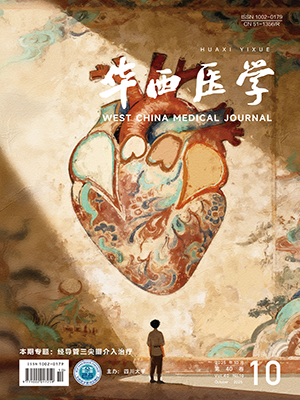| 1. |
中国高血压防治指南修订委员会. 中国高血压防治指南2010.中华心血管病杂志, 2011, 39(7): 579-616.
|
| 2. |
蒋春丽. 健康教育对高血压病治疗的影响. 中国医药指南, 2015(2): 294.
|
| 3. |
叶任高, 陆再英. 内科学. 6版. 北京: 人民卫生出版社, 2006: 247.
|
| 4. |
Guo FJ, He D, Zhang W, et al. Trends in prevalence, awareness, management, and control of hypertension among United States adults, 1999 to 2010. J Am Coll Cardiol, 2012, 60(7): 599-606.
|
| 5. |
Xi B, Liang YJ, Reilly KH, et al. Trends in prevalence, awareness, treatment, and control of hypertension among Chinese adults 1991-2009. Int J Cardiol, 2012, 158(2): 326-329.
|
| 6. |
张金霞, 龚志华, 冯颖青, 等. 老年男性高血压患者体质指数对心血管事件的影响. 中华心血管病杂志, 2015, 43(3): 239-243.
|
| 7. |
Peng B, Ni J, Anderson S, et al. Implementation of a structured guideline-based program for the secondary prevention of ischemic stroke in China. Stroke, 2014, 45(2): 515-519.
|
| 8. |
Humphrey LL, Fu R, Rogers K, et al. Homocysteine level and coronary heart disease incidence: a systematic review and meta-analysis. Mayo Clin Proc, 2008, 83(11): 1203-1212.
|
| 9. |
马雯. 微信朋友圈: 逃离还是坚守?. 河南日报, 2015-07-10(4).
|
| 10. |
Wierzbicki S. Homocysteine and cardiovascular disease: a review of the evidence. Diab Vasc Dis Res, 2007, 4(2): 143-150.
|
| 11. |
Taylor J. 2013 ESH/ESC guidelines for the management of arterial hypertension. Eur Heart J, 2013, 34(28): 2108-2109.
|
| 12. |
胡大一,徐希平. 有效控制“H 型”高血压——预防卒中的新思路. 中华内科杂志, 2008, 47(12): 976-977.
|
| 13. |
刘云, 张博. 基于微信公众平台的学习资源策展平台设计. 计算机光盘软件与应用, 2014(15): 15-16.
|
| 14. |
任小琴. 微信在急诊护理管理中的应用. 浙江临床医学, 2015, 17(2): 334-335.
|
| 15. |
覃美青, 谭鹤长. 手机微信平台在膝关节韧带重建术患者出院随访中的应用. 中外医学研究, 2015, 13(10): 145-146.
|




